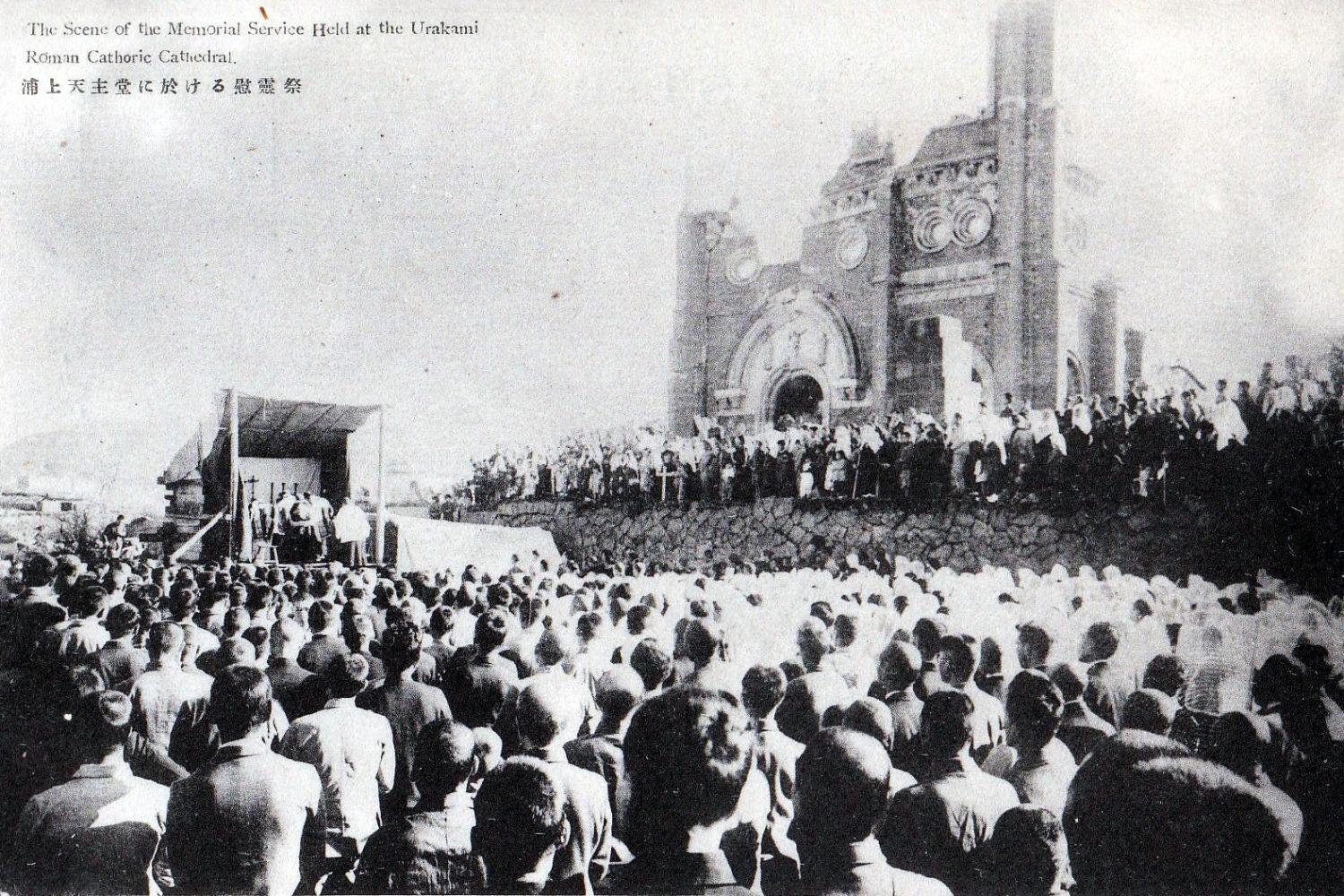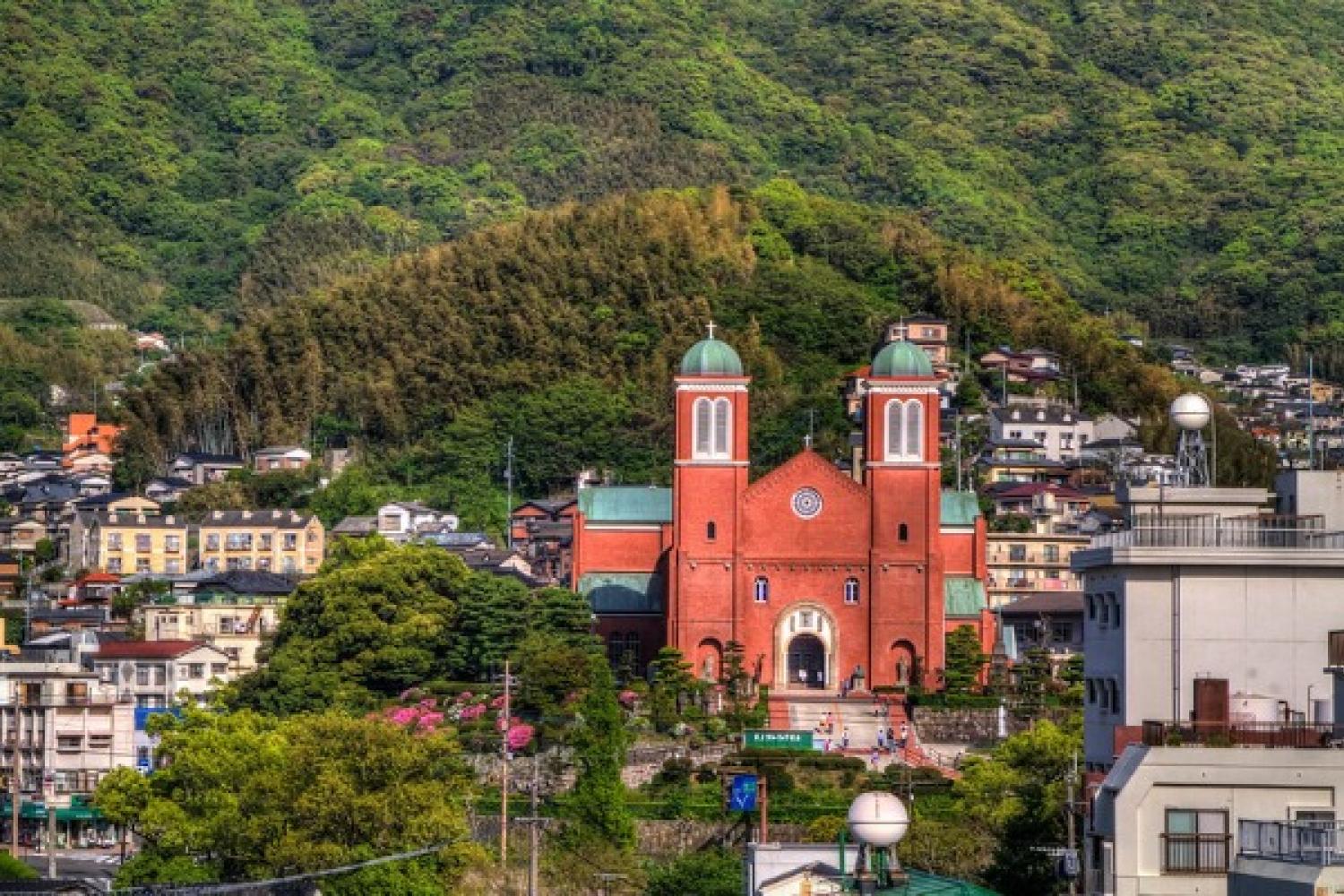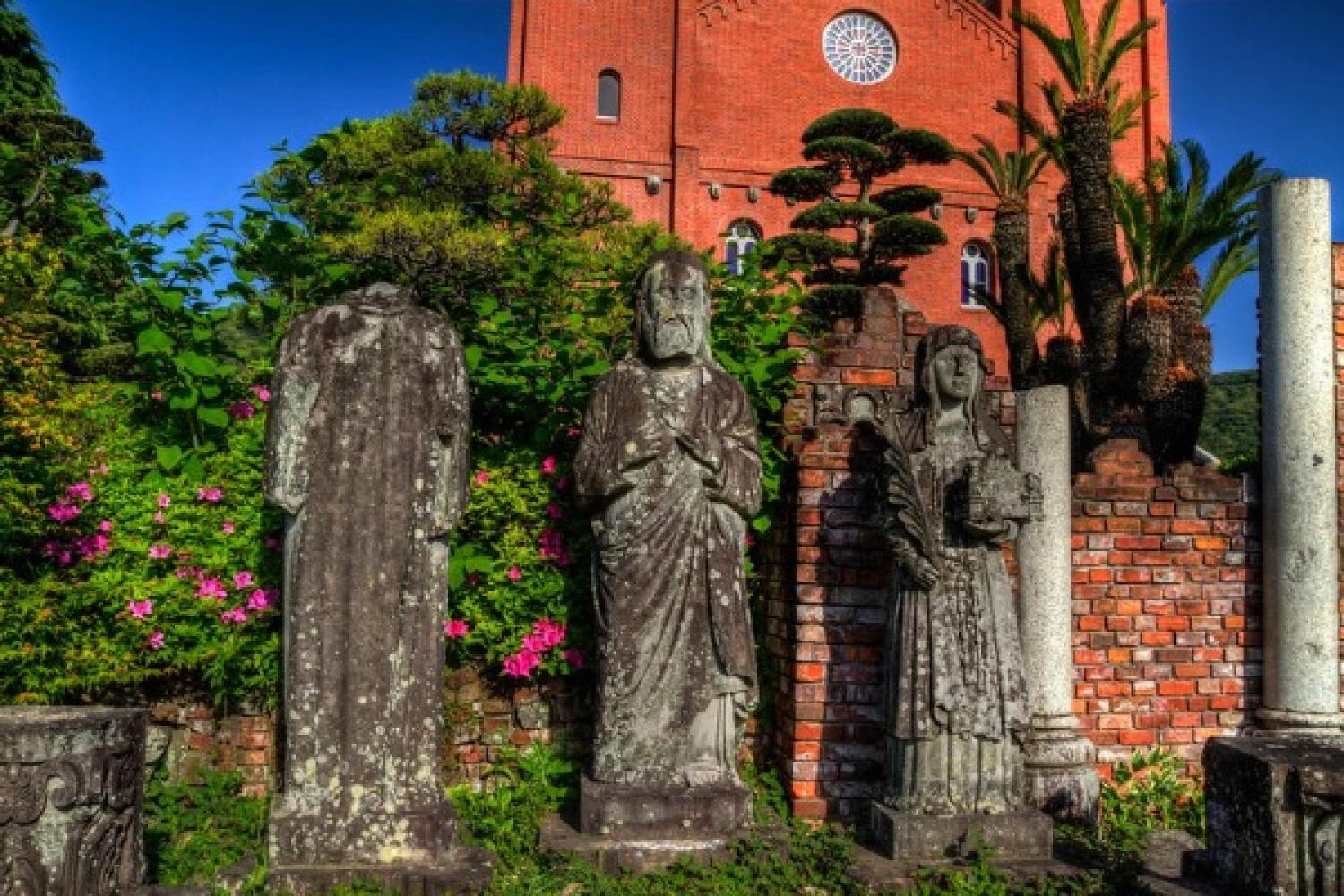
Despite Christianity being illegal in Japan from the seventeenth through nineteenth centuries, Christians lived alongside one another and persevered in the faith in the southern village of Urakami. It was near Urakami – which was later incorporated into the growing port city of Nagasaki – that the infamous practice of e-fumi was first practiced, in which suspected Christians were commanded to step on an image of Jesus or Mary (a fumi-e) to demonstrate that they were not Christians. Those who refused were tortured, and many of those who refused to recant were martyred.
When Christianity was legalized in Japan in 1895, the long-suffering Christian community purchased the land on which the e-fumi persecutions had been carried out in order to construct a church. Begun that year, the church was completed in 1925. At the time, it was the largest Christian church in East Asia.
On August 9, 1945, while a weekday Mass was being offered in the church, the second atomic bomb to be dropped over Japan to end World War II detonated, with its hypocenter only 500 meters from the church. The bomb, which had been originally intended for Kokura but was dropped over the secondary target of Nagasaki due to visibility concerns, killed an estimated 40,000 individuals instantly, including those present in the church. While remnants of the façade stood hauntingly above the surrounding rubble, the church was destroyed.
In 1958, the Diocese of Nagasaki began construction on a new cathedral, based on the plan of the original. Despite a movement within the city to preserve the rubble of the old church as a memorial – it was one of the few remaining visible reminders of the destruction wrought by the bomb – the new church was built on the same site, in honor of not only the long centuries of persecution of Japanese Christians but now the suffering arising from the atomic bomb, as well. The concrete structure was completed the next year, and the exterior was updated in 1980 to resemble the brick exterior of the original church.
Today, the church displays a bell and several statues that survived the atomic blast. Remnants of the old church walls can be found in a nearby park, as well as a museum dedicated to the effects of the atomic bomb.
Photo Attribution A: "Urakami Cathedral" by Ronald Woan is licensed under CC BY-NC 2.0.
Photo Attribution B: "Urakami Cathedral" by Ronald Woan is licensed under CC BY-NC 2.0.

The First Draught
To receive the Weekly Update in your inbox every week, along with our weekly Lectio Brevis providing insights into upcoming Mass readings, subscribe to The First Draught.

